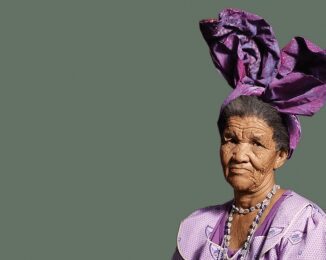National Art Gallery of Namibia, Windhoek, Namibia
05 Feb 2016 - 12 Mar 2016

Courtesy: Hentie van der Merwe
This exhibition looks specifically at the German Colonial era in Namibia by bringing together works by artists based in Namibia and Germany (as well as further afield). These artists, each in their own way suggest an approach to looking at, understanding and somehow coming to terms with this history.
With: Diana Arce, Matthias Beckmann, Berlin Postkolonial, Tahir Della, Melody Laverne Bettencourt , Nicola Brandt , Ondrej Brody & Kristofer Paetau, Judith Egger, Thomas Eller, Abrie Fourie, Tim Huepschle, Phillip Luhl, Nicky Marais, Philip Kojo Metz, Moholi Ndikung, Veico Ponofi & Nambahu Karina, Oliver Ressler, Spunk Seipel, Eric Schnak, Papa Shikongeni, Andrew van Wyk, Ella Ziegler
This era is bracketed by the influence of European forces before 1884 and the rule of South Africa over Namibia after 1915. Despite being relatively short and marked on both sides by other atrocities, the German colonial era has left its own deep scars. The markers of this are still visible in the everyday life of Namibians: from the old German architecture and memorials to the vast fields of mass graves, these physical markers have become very much part of the country’s landscape. In Germany, too, the memories have not vanished, however there is little visible evidence of the colonial history in Germany itself.
The occupation of Namibia (then “Deutsch-Südwestafrika”) began with a complex political and economic history, which mirrored the various political constellations in the German Reich. In the last hundred years, opinions of the colonial past in Germany and Namibia have differed and the matter is still considered politically sensitive. Both the Nama and Herero people suffered the greatest losses during the extermination war lead by the German empire. Full acceptance of historical guilt remains widely unacknowledged. It is only recently; since the early 2000s that these atrocities have received a greater public awareness in Germany. In 2004, Heidemarie Wieczorek-Zeul (then the German minister of Economic Cooperation and Development) told a commemorative ceremony that the brutal crushing of the Herero uprising 100 years ago was genocide. In Namibia the removal of the Reiter Denkmal in 2013 (a monument to German soldiers who died during the war) while being applauded by some was admonished by others.
It is for this reason that exhibitions like this one must be given a platform from which to create dialogue. Namibian as well as German artists are given the opportunity to express their own, subjective views of history, without being historians. Art is privileged in, that as a medium for commentary, it can give way to new impulses and ideas. These responses can stimulate and create discussion while raising awareness of the past.
Curators: Helen Harris and Dr. Spunk Seipel